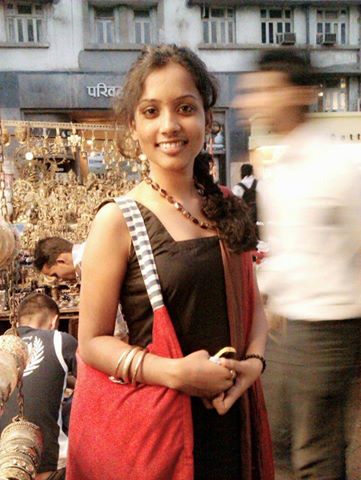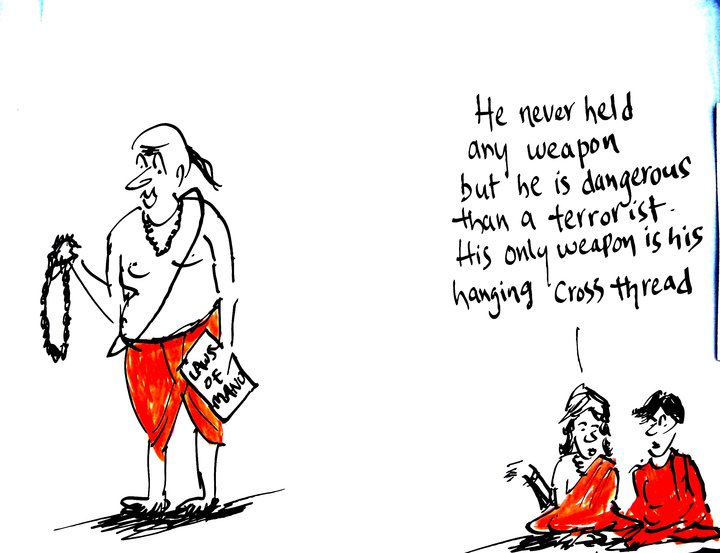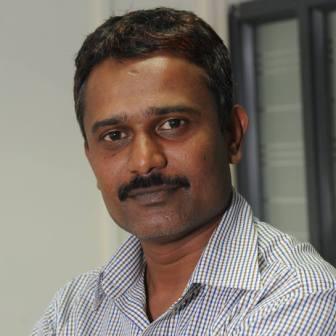Pradnya Mangala
 It is important to approach the study of disaster, not as an exercise in social disorganization or pathology but as the occasion for understanding some of the more important normal structures and processes, such as communication, interactions, organization, decision making. Thus an approach which emphasizes social adaptability, not social pathology and problem solving, not social chaos, should have primary emphasis. ~ Russell R. Dynes.
It is important to approach the study of disaster, not as an exercise in social disorganization or pathology but as the occasion for understanding some of the more important normal structures and processes, such as communication, interactions, organization, decision making. Thus an approach which emphasizes social adaptability, not social pathology and problem solving, not social chaos, should have primary emphasis. ~ Russell R. Dynes.
Discrimination against Dalits is a reality that continues uninterrupted in India. Each day we come across cases of atrocities- brutal rapes, murders and other such denials of basic fundamental human rights with regard to Dalits. It then follows, when any disaster occurs in the country, discrimination against Dalits is inevitably bound to occur.
According to the International Federation of Red Cross (IFRC) the definition of disasters is: sudden, calamitous events that seriously disrupts the functioning of a community or society and causes human, economic and environmental losses that exceed the community’s or society’s ability to cope using its own resources. Though often caused by nature, disasters can have man-made origins. Natural hazards are often beyond human control. What, however, aggravates the situation and often leads to disaster, is the underlying social vulnerability that exists in a society. In the South Asian context, the primary and deeply embedded social vulnerability which leads to miserable situations during the occurrence of such disasters is the Indian caste system. The caste system results in social, economic and political vulnerability for Dalits, which, as mentioned earlier, is a daily reality for them. But specifically in emergencies, as well as in the relief operations that follow where any of these disasters occur, this discrimination results in horrific consequences for Dalits.
‘Polluted’ vs. ‘Pure’ relief work
The fact is, it is always the Dalits who are the worst affected in terms of the losses suffered during such calamities. Dalit hamlets are largely ‘kuccha’ (houses made of plastic sheets, dried brick or mud) or semi-pucca (makeshift) and are mostly located outside the main villages. During any such calamities, it is their houses which are totally destroyed, leaving them homeless and at the mercy of temporary shelters and government or NGO-provided relief camps.
Over the last two decades, shocking observations have revealed the widespread discrimination against Dalits in disaster affected areas. Several newspaper reports and Tribunals have highlighted the issues of discrimination during relief works and recommended setting up of grievance cells to ensure transparency and rationalization in rehabilitation efforts by civil society and the administration. The earthquake that hit Maharashtra’s Latur district (1993), the super cyclone that hit Odisha (1999), the earthquake in Gujarat (2001), the Tsunami in Tamil Nadu (2004), the floods in Bihar (2007-08), Assam (2010), Andhra Pradesh and Karnataka (2009) – all of these are replete with similar horror stories. Most of the incidences of discrimination, exclusion, stigmatization faced by Dalits during the relief work are a result of the notion of purity and pollution which is the basis of the Hindu notion of social hierarchy. And the relief work is similarly not untouched by these inhuman notions.
It has been documented by Tata Institute of Social Sciences (TISS) during the Latur earthquake in Maharashtra in 1993, relief teams were not allowed by the upper castes to build residential shelters for Dalits in the main village. Similarly, there was a complete denial of relief materials to Dalits during the Gujarat earthquake in 2001. The situation was even worse during the Tsunami in 2004 and during the Bihar floods in 2007-08. The National Dalit Watch (NDW) which was created in 2007 to monitor caste discrimination in disaster situations also observes exclusion and discrimination faced by Dalits during disaster relief operations. It also documents how they are often even excluded from getting compensation and other entitlements. To add insult to injury, Dalits are also exploited through forced labor and made to clear the debris and corpses.
My Odisha Experience
Recently, I went for one of my field explorations to Odisha with the objective to understand the long term recovery process post cyclone Phailin (2013) in Ganjam district of Relingdunda block of Odisha. Ganjam was also one of Odisha’s worst affected districts during the super cyclone that happened in 1999. I tried to critically analyze the aforesaid objective through empirical experiences. This analysis is based on the observations and interactions I had with different people from the community- Dalits, non-Dalits, and other stake-holders.
Villages in Odisha are tightly caste based, and the segregation in the village is also strictly caste driven. One of the local Dalit activists, while explaining the caste system and its implications on the lives of Dalits in the district, said, “We call the upper caste villages as ‘Gandhipada’ and the Dalit hamlets as ‘Ambedkarpada'”. He added, “Even if we go to hell or heaven we will carry our caste identity.” The government of Odisha eventually claimed that the state’s response to Phailin was the best disaster response. This, though, is far from the truth for many survivors.
I came across many narratives while trying to understand the response process. One of the most commonly held beliefs in the context of disaster situations is that everyone is affected equally in the event of any disaster. This is an extremely fallacious argument: In a grossly unequal and stratified society, how can everyone be equally affected? Historically, oppressed Dalits communities lack social and economic capital; they have no say in political parties and neither do they have any strong representations on the political front to voice out their sufferings. This notion of everyone getting ‘equally affected’ is a conspiracy that is used to erase and distort the agony which Dalits face. It is furthered to keep them in a state of perpetual deprivation and poverty.
~
The hygienic conditions of the Dalit hamlet, located at the fringes of the village called Baxipalli are pathetic. The access to most of these hamlets is generally the kuccha pathways which are used for open defecation. Pigs are found loitering about, and the village waste dumped near the Dalit hamlets is a common sight. When the cyclone alert was issued, people from the Dalit hamlets were evacuated as the government couldn’t afford huge losses of life given the impending elections. So they made sure that even Dalits were picked up from their hamlets and put in schools and other cyclone shelters. After two days when the cyclone subsided there were no provisions nor were any immediate steps taken to fix their houses.
The compensation provided was extremely inadequate to rebuild the houses. Villages like Kadarpalli, where 80% of the population are Dalits, have been totally neglected by the government on almost every front. It is so peculiar (or perhaps not?) that in the villages with a majority Dalit population, the schools and other basic infrastructure are in bad shape. The teachers are essentially all from dominant castes, largely Brahmins. At one of our visits to a municipal school, the teachers ended up inquiring about our castes. We also saw girl students being made to clean the class rooms! Utterly shocked on seeing this I asked the teacher, “Girls come to study in the school. Why are they cleaning the classrooms then?” The school teacher replied in a nonchalant manner, “Madam, we have no peons in our schools so what is wrong if they clean? They are anyway good at it.”. It was then obvious to me that the girls were surely from a lower caste background.
All this comes only as a reminder of how the normalcy of caste prejudices is taught, preached and practiced ardently in schools and in the society. Dalit girls dropping out of school post Phailin was a common phenomenon. And that surely has been the case in other post-disaster situations too in this country. The girls have to mostly leave their schooling and stay back home often to take care of their destroyed houses and their siblings. Many Dalit houses that we visited had Dalit girls below the age of 18 who were the main earners of the household. They along with their families often migrate to industrial cities like Surat, Chennai, and Mumbai to work as domestic workers and agricultural labourers.
Structural violence
I have problems when violence is only seen in a physical form. Dalits have had to face physical as well as structural forms of violence because of their caste. Moreover, given internal poverty and patriarchy within castes, Dalit women have to constantly face all forms of violence: physical, structural, emotional and sexual. It has much larger implications on their lives as this makes them even more vulnerable to exploitation by upper castes.
The one thing that is the closest for everyone to hold on to is Dignity. Many who live their lives with minimum assets earn their livelihood and live their lives with dignity. But in the discourse around disaster, dignity – in the context of emergency and relief work- becomes a sudden concern for the upper castes. They talk of food packets being dropped at the victims and other such incidents signifying loss of dignity during such disaster and relief work. This becomes a matter of sympathy and concern for academicians and civil society members. But does this hold true in the case of Dalits? Certainly not! Jobs done by Dalits, the places where they stay- their padas, even their presence is not seen in a dignified manner by the otherwise dignity-conscious people. Dalits, each time they try to assert their rights to live a dignified life, are made to suffer the outrages of the upper castes. And so it becomes a matter of serious concern in the context of disasters, where the dominant castes hamper the dignity of Dalits even further while wrongly insisting that it affects all equally.
Exclusion even in Emergencies
Babasaheb rightly said, “What is the village but a sink of localism, a den of ignorance, narrow-mindedness and communalism.” A terrible fact that still holds so true. In villages like Golabandha, New Golabandha and Haathipada, which are considerably big and located near cities dominated by the upper castes, Dalits live in one or two lanes, locally known as ‘sai’. On asking about caste discrimination, one of the ward members of the village, a Telugu speaking upper caste woman, said that in their village there is zero percent caste discrimination. While referring to the other ward member who was from the dhobi caste, she elaborated by saying, “The harijans live right at the entrance of our village. My mother-in-law used to not allow them to enter our house. She didn’t even take anything touched by them. But now times have changed. My mother-in-law still behaves the same but I do allow them in my house. They work as domestic workers in our house”. For most upper castes, such actions are meant to reflect ‘positive change’ and ‘zero discrimination’.
Dalits in these villages told me that they had no livelihood options. The majority of them work as agricultural laborers as they don’t own land of their own. After the cyclone destroyed the agricultural fields, they are jobless. As mentioned earlier, they are not even considered for compensations. Meanwhile, the majority of upper castes work as army officials, as there is an Army Air Defense base establishment in the area. They also own agricultural land. Unlike Dalits, their livelihoods are not dependent solely on agriculture but even then they are liable for compensations because they are the owners- the tiller has no say and is not considered eligible for compensation.
One man from the harijan sai said, “Why even talk about agricultural lands? The government doesn’t even think us worthy enough to give us land for cremation. We do last rituals in the waste land which is used for open defecation; this is the state we live in”. He further said, “I am illiterate. Hardly one or two people have managed to pursue graduation but I have heard about Ambedkar. He has written laws but these upper caste people don’t implement and follow those laws. That’s why we are in this pathetic condition”. I understood what he meant- all the important positions in the government, judiciary, education or even the disaster relief work are all under the control of the upper castes. And that is why things meant from Dalits never reach them- be it compensation or education or justice.
The power relations and structures there (as everywhere else in this country) are upper caste and male dominated. The Telugu speaking kshatriya population is fairly dominant. In a few villages they have established “Mandals” and “Mahamandals” which are basically community based societies. A Naidu has been appointed as the head of the mandal and he has a council group from the community. Now this mandal is supposed to take care of all the disputes that take place in the community. I happened to meet the Naidu who was an ex-Air force official. He told me that these mandals were very important for them especially as spaces to organize discussions, programs, meetings etc. He enlightened me further by saying, “When there is any dispute like if guy/girl from our community happens to marry a guy/girl from any lower caste we boycott them from our community. If necessary we even ask them to leave the village as a punishment. It is similar to the Khap panchayats but functions in a subtler manner. We have to retain our culture.“
This is how Brahminism infiltrates and operates in our society; it works in every possible way to maintain the hegemony of the dominant castes. These mandals or community spaces which are important for community exchanges, especially during disasters as places for refuge, are denied to Dalits. As expected, during catastrophic events like cyclones etc., these become spaces of exclusion. The entire system, the structure, as we know works only on one principle- exclusion. And as illustrated through this essay, situations of disaster bring about the most disastrous side of this deep rooted idea of exclusion.
I would like to acknowledge the help extended by Nilesh Kumar in preparing this report.
~
References
http://hindu.com/2005/02/07/stories/2005020705720600.htm
http://www.indiawaterportal.org/articles/caste-discrimination-disaster-situations-india-reports-national-dalit-watch
http://www.indianet.nl/tsunamiendalits.html
~~~
Pradnya Mangala is an M.Sc in Environmental Sciences and Disaster Management from TISS.










